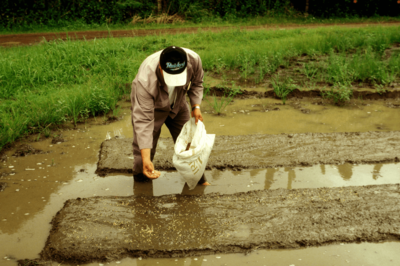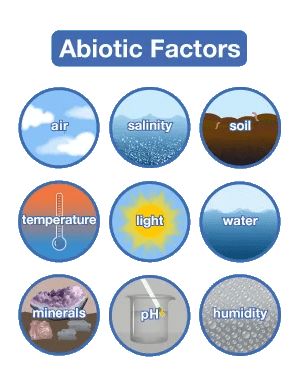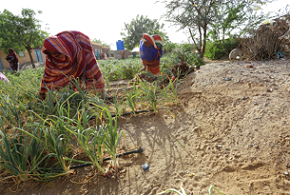Introduction
Agriculture has played a significant role in the rise of human civilization, but organic farming of domesticated species has produced food surpluses that have enabled people to live in urban areas. Agriculture is the art and science of creating and cultivating soil, increasing yields, and keeping animals. Agriculture and farming have historically been essential to human life. The expansion of agriculture and farming was a factor in the development of civilization.
What is Agriculture?
Agriculture is characterized as the practice of growing plants and animals for human consumption. Various parameters need to be considered in agriculture, such as the type of crop, soil characteristics, environment, and so forth. Farmers decide which crop should be cultivated at what time and location based on these parameters. Aside from that, reasonable soil, environment, and season are insufficient to produce a high-quality product. It necessitates several tactics that need to have been used.
Want to get an “A” on your Science exams? Let our expert teachers be your guide toward improving your grades and reaching your highest potential. Watch the related video of this chapter in Class 8th Science lesson no 1.
Importance of Agriculture
Social and Economical Aspect:
- Agriculture increases the availability of food, which improves population nutrition and promotes population health.
- A small number of people cannot do agriculture. Each of its processes requires the input of numerous persons. Consequently, this results in the creation of jobs.
Environmental Aspect:
- Waste management depends heavily on agriculture. The biodegradable wastes can be transformed into manure, which the plants can use as a source of food.
- With the right treatment, bare soil can be turned into crops, ensuring agriculture’s efficient use of land resources.
- It significantly contributes to preserving the microclimate of any location and raises the standard of the ecosystem as a whole.
What are the Basic Agricultural Practices?
Those consecutive actions that are taken to guarantee the proper production of crops are referred to as “agricultural practices.” To guarantee a yield of great quality, this must be done. The next section has a quick discussion of the steps.
Steps of Agricultural Practices
- Preparation of soil:
-
- It is crucial to prepare the soil to make sure it is rich, well-drained, well-aerated, uniform, and can hold enough moisture. This stage is essential because the soil must survive numerous adverse situations. After all, it is exposed to them.
- Typically, the preparation is carried out with the aid of various tools, such as a hoe and a plow.
- To provide the best aeration, the soil must be dug out and loosened.
- To spread the dirt equally and avoid lumping, leveling is done after plowing.
- Finally, there is a chance that the soil has run out of nutrients, which could be bad for plant growth. Manure and fertilizers are thus applied to restore it.
- Seed selection and sowing
- Choosing the right seeds is crucial to getting a good crop.
- A quality seed, also known as an HYV or High Yielding Variety seed, guarantees improved plant growth, increased disease resistance, and increased yield.
- The chosen seeds must be planted in the prepared field after being chosen.
- Sowing is the distribution and burying of seeds into the soil, whether by hand or with the aid of machines.

- Irrigation
- To meet the crops’ water needs, the best possible amount of water is applied to the soil where the crops are growing.
- A source of water, such as ponds, wells, rivers, etc., is typically supplied by a variety of channels, such as canals or pipelines.
- Crop maintenance
-
- Considering that the crops must grow for a long period and are exposed to the elements, they need some maintenance.
- In essence, they can be destroyed by the numerous pests, birds, rodents, etc. that are likely to attack them.
- Unwanted plants known as weeds can encroach on cropland and compete with crops for nutrients, stifling the development of crops.
- To protect them, it is therefore imperative to apply weedicides, insecticides, etc.
- To stop bird assaults, farmers frequently construct scarecrows.
- Harvesting
-
- It is the process of gathering the crop’s valuable components, and it is typically carried out after the crop is fully mature and has reached its ideal development stage.
- It can be carried out manually with implements like a sickle or with the aid of machines.
- Storage
- In this last step, the harvested goods are moved to the granaries or storehouses before being distributed to the market.
- To prevent desiccation, it is essential to dry the items before storing them, especially grains and pulses.
- The items are additionally fumigated to deter rodent and pest infestations.
What are Sustainable Agricultural Practices?
The concept of sustainability is the prevention of resource depletion by the adoption of specific actions that preserve both the health of the natural world and the future of humanity. Some of the measures taken in agriculture are discussed below.
- Making sure that soil is properly used and prepared to prevent erosion.
- Reducing water use through the application of new methods and tools.
- Drop-by-drop watering is done with drip irrigation, which is time-controlled. In the revolutionary practice of hydroponics, nutrients are dissolved in water and fed to plants to provide them with nutrition.
- The use of biodynamic farming methods is recommended.
- Crop rotation proposes that different crop types should grow in a specific region.
- Promoting the expansion of the pests’ natural predators to reduce the need for pesticides, weedicides, and other chemicals.
Summary
Agriculture is characterized as the practice of growing plants and animals for human consumption. Agriculture increases the availability of food, which improves population nutrition and promotes population health. The biodegradable wastes can be transformed into manure, which the plants can use as a source of food. It is crucial to prepare the soil to make sure it is rich, well-drained, well-aerated, uniform, and can hold enough moisture. Crop rotation proposes that different crop types should grow in a specific region.
Frequently Asked Questions
1. Define Pesticides?
Ans. Pesticides are a class of chemicals that include insecticides, herbicides, and fungicides that are used to control pests (harmful organisms) in agriculture. Examples include glyphosate, DDT, etc.
2. Why is it no Longer Advisable to use Fertilizers Today?
Ans. Fertilizers are extremely damaging to the environment. Overuse of fertilizers creates contaminants that travel via the water and air. They obliterate the water and soil microorganisms. They contribute to a phenomenon known as “biomagnification.” So it is not recommended to use more fertilizers.
3. Which Crop Diseases are Prevalent?
Ans. Common bacterial diseases include fire blight, necrosis, and Granville withering. Exfoliation, wheat black rust, and other common fungi-caused illnesses are only a few examples.
4. What is the Indian “Green Revolution”?
Ans. With the use of technology, agricultural systems in India were transformed into modern industrial systems during the Green Revolution of the 1960s. This period included the use of HYV, mechanized farming tools, irrigation systems, fertilizers, and pesticides.
5. Define Genetically Modified Crops?
Ans. Genetically modified crops are those whose genomes have undergone genetic engineering modifications to exhibit desired features like higher nutrient production and pest resistance. For example, BT brinjal.


